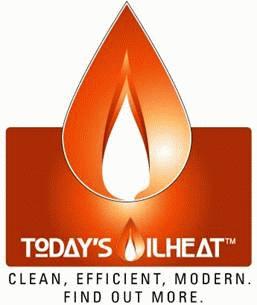
Welcome!
We are proud to say that as our company has grown over the last 30 years we have not lost our personal touch with the customers and pride ourselves on our "Old Fashioned" way of operating our establishment. Many of our loyal long standing customers have stayed with us over the years due to the personal service we offer to each and every one of them.
Know the dirt before you convert!
When considering a new heating system for your home, the following information may be of service in helping you make an informed decision.
| Myth | Oilheat is expensive. |
| Facts | Heating oil actually costs less than it did in 1980, when adjusted for inflation, and serves about 23 million Americans in 8.6 million households. Sources: Oilheat America |
| Myth | Oilheat does not produce as much energy as other fuel sources. |
| Facts | Each gallon of heating oil contains approximately 139,000 units of thermal energy (BTUs), making it an economically competitive energy source. Source: U.S. Energy Information Administration |
| Myth | Oilheat today is inefficient. |
| Facts | Oilheating systems in use today use substantially less fuel than they did just 20 years ago. For example, an average home that used more than 1,200 gallons of heating oil in 1989 now uses only 900 gallons, or 25% less. This decrease in usage is attributable to advances in equipment efficiency and household conservation. New heating oil systems boast energy efficiency ratings from 83 to 94 percent. Source: National Oilheat Research Alliance, America Petroleum Institute |
| Myth | Oilheat produces many harmful air emissions. |
| Facts | Heating oil burns almost 95% cleaner than it did in 1970. Today, residential oil burners produce less than one-third of one percent of total U.S. particulate emissions. Sources: Oilheat America , American Petroleum Institute
To gain even greater efficiency and lower emissions, the industry in coordination with state environmental agencies is working to cut the sulfur content of heating oil from 1,500 parts per million to 15 parts per million by 2018. Source: National Oilheat Research Alliance |
| Myth | Oilheat has not responded to concerns about global warming. |
| Facts | Since 1970, the heating oil industry has cut its total greenhouse gas emissions by approximately one third. Source: National Oilheat Research Alliance |
| Myth | Oilheat is not renewable. |
| Facts | In addition to its sulfur reductions, the heating oil industry is moving toward zero emissions with new fuel blends, called Bioheat®, which contain between 2 and 20 percent renewable fuel. When combined with Bioheat® Oilheat has the potential to reduce emissions to the lowest level of any fossil fuel. Source: National Oilheat Research Alliance
In fact, if just 5 percent of Americans heated their homes with today’s Bioheat®, it would be equivalent to taking 700,000 cars and trucks off the road. Source: Oillheat America |
| Myth | The heating oil industry does not contribute to the local economy. |
| Facts | Each year, the heating oil industry accounts for $20 billion in sales and $1.9 billion in payroll for 49,000 Americans. The fact that half of the U.S. energy workforce is expected to retire in the next 10 years, when combined with the heating oil industry’s commitment to renewable fuels, means that there will be thousands of good-paying jobs available for highly trained technicians, engineers, researchers, oil field workers, and others. Source: Center for Energy Workforce Development |
| Myth | The heating oil industry is dependent on foreign energy from hostile suppliers. |
| Facts | This “myth” is complete nonsense. The United States produces the vast majority of its heating oil and imports 10 to 15 percent from Canada, the Caribbean, and Latin America. Canada and Mexico also provide the United States with a significant amount of its crude oil. Advances such as Bioheat® mean more heating oil can be produced in the Midwest instead of the Middle East. And new exploration technologies such as horizontal drilling also mean the United States can responsibly produce more oil at home. Source: U.S. Energy Information Administration |
| Myth | Heating oil is not safe. |
| Facts | It takes an advanced high-tech burner to ignite heating oil. If you drop a match into heating oil it will go out as if dropped into water. Heating oil must be vaporized before it will ignite or burn. Source: Oilheat America |
*Natural Gas’ Price Advantage Is Short-Term. A combination for circumstances virtually guarantees that the price of natural gas will increase in the years ahead. For instance, natural gas use for power generation rose 7% between 2009 and 2010, and those numbers continue to climb. Translation: as more power plants switch from coal to natural gas, the price of natural gas will most likely increase. Moreover, the natural gas companies are moving to export large quantities of natural gas overseas to Europe and Japan, where it commands a higher price. Should this happen, gas prices in the US could rise 54% within 6 years. It doesn’t end there. The natural gas companies are moving to cut production in an effort to drive prices upward. For instance, Chesapeake Energy Corp., the nation’s second-largest producer of natural gas, announced that it would cut daily production by 8%– a move “designed to reduce the glut of natural gas in the US, and therefore increase prices.”
|
|
